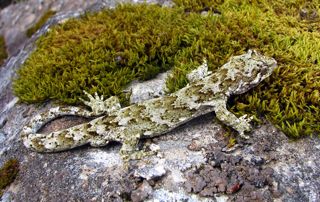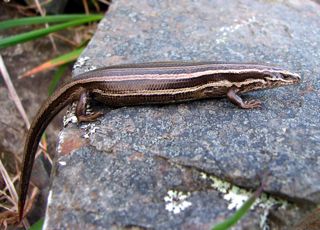|
|
NZ REPTILES
The Small-scaled skink is one of about 60 species of endemic New Zealand reptile. New Zealand reptiles are represented by three groups; Tuatara, Skinks and Geckos, of which skinks are the most abundant. In recent years there has been an increase in the number of known species, largely through genetic analyses revealing cryptic species within some of the more widespread morpho-species complexes. A prime example is the Woodworthia maculatus species complex, which has recently been subdivided into ten distinct lineages that will probably be classified as species within the near future (Nielsen et al., 2011).
The New Zealand lizard fauna has a high rate of ovoviviparity. Most lizards worldwide lay eggs, but all but one endemic species in New Zealand give birth to live young. The development of the young is also much slower than in other species; gestation is typically between 7 and 10 months, with one alpine species recorded gestating for 13 months. Offspring take 2-5 years to mature, but may live for 40 years or more. Research indicates live birth and slow development might be a cold-climate adaption, which would have allowed lizards to persist in New Zealand through cold climate phases of the Pleistocene (2.6mya- 20,000ya).
Native reptiles were once abundant throughout New Zealand, but introduction of mammalian predators and extensive habitat modification has seen a great decline, with several species now restricted to offshore islands. Many species are adapted to habitat that is only found on the mainland, and so a conservation focus is on stabilising populations of these species through intensive trapping of predators, captive breeding to supplement loses, and establishment of predator-proof areas. |
 
|
|
|
|